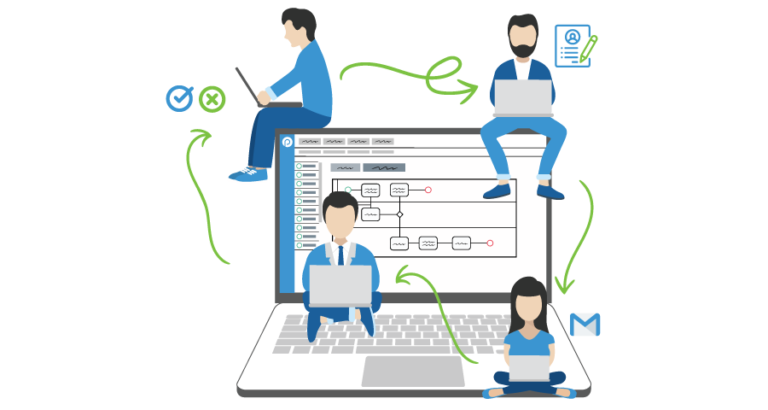Incremental process improvements play an important role in keeping production flowing smoothly. However, when an entire system has become obsolete, it is time for complete business process reengineering (BPR).
The purpose of business process reengineering is to completely overhaul existing methods. Business processes are redesigned from the ground up with a renewed focus on the company’s mission and the customers’ needs. For most companies, the primary goal of BPR is to radically improve productivity, quality, and cost-efficiency, transforming a company that is barely competitive into a serious contender.
When to Consider Business Process Reengineering
Complete reengineering of a business process requires significant resources. In some cases, the return on investment is too low to make the project worthwhile, and smaller improvement initiatives will suffice. Full-scale business process reengineering is most appropriate for organizations faced with any or all of the following challenges:
- Despite its best efforts, the organization simply cannot keep up with competitors of any size.
- Though large capital investments are made in the current processes, the return on investment is shrinking.
- Incremental improvements result in a process that is increasingly complex and costly, with little in the way of improved production and quality.
- The process is clearly broken beyond what a simple retooling or correction of a single inefficiency can correct.
- Responsibility for processes is fragmented, and a variety of individuals and teams are involved. When issues come up, no one takes accountability for solving problems and getting workflow up and running again.
In these situations, business process reengineering can mean the difference between continuing to struggle and getting back on top.
How to Reengineer a Process
Once it has been determined that a process can no longer be tweaked and tinkered with, it is time to begin the reengineering process. Start by putting together a team, ideally made up of at least one individual from each department involved, along with appropriate members of leadership.
Step 1: Create a Mission Statement and Define Goals
If there is no existing mission statement, define one, and if one exists, confirm that it still lines up with the company’s goals. If not, recreate the mission to match the organization’s true purpose.
- How has the company changed since the mission was defined?
- Has the mission changed?
- How has the client base changed?
- How can the mission be updated to take the needs of the business and the needs of the customer into consideration?
The completion of a mission statement offers an opportunity to define high-level business goals that match both business and customer needs.
Step 2: Identify Core Business Processes
Careful examination of current business processes is an important preliminary step.
- How do processes relate to the mission and core business objectives created in the first step?
- How can core processes be changed to achieve improvements in critical performance measurements such as cost, quality, service, and speed?
- What IT and business process management (BPM) tools are available? For example, the reporting function in advanced BPM platforms can be used to track key metrics.
As these questions are answered, the BPR team can begin to consider new methods of organizing workflow for improved cost, quality, service, and speed. In addition, the team has an opportunity to make decisions about the role advanced technology will play in the updated processes.
Step 3: Develop the Process Team
Through BPR, responsibility for processes is reorganized so that cross-functional teams oversee the entire sequence from beginning to end. This eliminates unnecessary hand-offs and speeds up the flow of information.
Successful new processes are managed by one department that is trained to handle all required activities. Giving one team end-to-end responsibility for a process has been shown to achieve greater overall productivity, efficiency, and quality.
Advanced BPM technology is available to make sharing information and collaborating on workflow seamless. Through these platforms, data is centralized, and team members have a simple, secure method of communication.
Step 4: Designing a Streamlined Process
As roles are defined, it often becomes clear that a variety of people are unnecessarily included in the process. Streamlining requires that extra tasks and extraneous staff be removed. All of the activities and people involved in the process must add value, or else they create a drag on its overall efficiency and effectiveness. This can be accomplished by reviewing and taking action on the following points:
- Combine similar activities.
- Limit the number of people involved in completing each task.
- Reduce the number of sub-processes and tasks in the process.
- Retire outdated software, and consolidate tasks for processes across the business into a single, versatile platform.
- Use BPM software to automate tasks whenever possible.
Finally, don’t be afraid to eliminate entire processes once they no longer add value to the business. Successful process reengineering should advance the company towards its mission and support the achievement of the stated goals.
Best Practices in Business Process Reengineering
Business process reengineering is a complex, time-consuming undertaking, and in some cases, the entire project fails. The most successful teams discover that keeping the team’s size to a group of 10 or less can make an important difference in success. In addition, gaining the buy-in of key stakeholders before beginning the project is highly recommended.
BPM software is an effective tool for successfully managing business process reengineering, as process maps give a visual representation of the process being reviewed. These tools allow users to make changes easily during the project planning stage, and they can measure and report back on the success of a new process after implementation.
To learn more about how BPM can play a role in the reengineering of your business process, visit ProcessMaker, a leader in BPM software solutions, or download our whitepapers.





